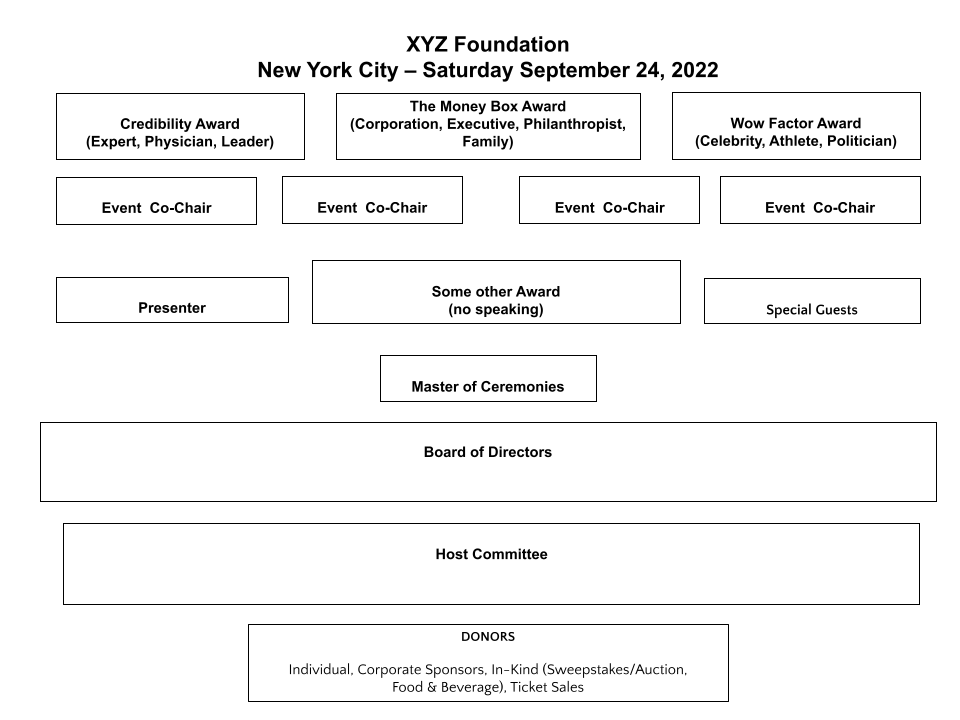Increasing Efficiency: Time Management For Social Workers
As a social worker, it can feel like you’re being pulled in several directions at once. With so many high priority tasks, knowing how to work efficiently and manage your time can make or break your ability to stay on top of your cases.
Of course, efficiency and effective time management shouldn’t mean leaving a job half-finished or cutting corners, especially in a field as important as social work. Instead, whether you’re working independently or as part of a team, your time management strategies should maximize the limited time and resources you do have to ensure your most pressing tasks always get completed.
This article will explore four time management strategies specifically for social workers to help you work more efficiently:
- Use automated tools.
- Organize tasks based on priority and efficiency.
- Block out your time.
- Stay on top of your data.
Deliberate, quick, and thoughtful case management is essential to your clients, and staying on top of your workload is essential to managing your own stress levels and ability to plan for the future. So do both yourself and your clients a favor by taking purposeful steps to improve your time management. Let’s get started.
1. Use automated tools.
It’s easy to feel like you need to do everything manually to manage your cases correctly. However, one of the fastest ways to save time and reduce your overall workload is to set up automated processes to handle administrative work for you.
Social Solution’s guide to social work case management walks through the four core aspects of case work and potential ways to automate each process:
- Intake. While your first meeting with a client is essential for determining their immediate needs and establishing a connection, you can speed up the process by minimizing the amount of information you need to collect during the meeting. Consider setting up self-service tools that allow clients to enter their essential information such as their demographic and contact information when they first reach out. This way, you can keep your meetings to the point and jump straight to figuring out each client’s core needs.
- Needs assessment. A thorough needs assessment can take time, but you can set up tools to identify a client’s core needs more quickly. Create standard assessment tools that you can reliably use in most cases to help gauge how pressing a client’s immediate needs are and what services you should assign to them.
- Service planning. Your service plan is your roadmap for each client, defining what goals you have for them and what steps need to be taken to achieve those goals. You can keep your service plans organized and up to date by using a streamlined database or case management platform that allows you to easily update each client’s plan.
- Monitoring and evaluation. Ensure you are always monitoring each client’s progress toward their goals to determine if and how well the services you assigned them are working. While you should talk to clients to understand their perspectives on their progress, you can also use reporting tools to generate reports with quantified data that can help you assess your overall progress at a glance.
Additionally, automated tools can provide timely alerts to keep your team on top of key details that could potentially fall through the cracks. This is especially important with teams with several members working from home, as information can get lost or simply not communicated to team members working remotely.
If you are working from home, consider if there are any tools you can use to speed up your own workflow or better manage your time. Working from home can have the side effect of blending your personal and professional life, making it unclear when exactly you are on and off the clock. Take advantage of work-from-home tools and strategies to create an office environment in your home to help you stay focused while working on your cases.
2. Organize tasks based on priority and efficiency.
How you manage your daily tasks is essential to how well you’re able to maximize your time. While it can be easy to fall into a habit of tackling tasks as they come up or even handling things based on when they were added to your task list, these strategies can leave you putting out fires and delaying important cases.
Be sure to take a moment to assess your current list of tasks and organize them by two key factors: priority and efficiency. Here’s what these factors mean:
- Priority. How important is each task? This can be influenced by time sensitivity, urgency, and overall importance. Emergencies do come up, and your task list should allow you to prioritize them as necessary. Tasks that need to be completed at some point but are not of immediate concern or importance will be low priority, while those with an immediate deadline that require urgent action are high priority, with everything else falling in between.
- Efficiency. How quickly can you complete a task? Often, many small tasks can get pushed off and add up to create a significant time sink later on. Identify which tasks will take more time and which you can complete quickly. Then, when you finish your high-priority tasks, you can knock out several quick tasks at once, such as assigning or referring clients to services. Doing so can help boost morale as a seemingly insurmountable task list can be cut down significantly by prioritizing quick tasks.
Another trick some social workers find helpful is color-coding tasks based on priority and efficiency. This approach can help you organize your daily schedule at a glance, though be sure to regularly refer to your main organization and scheduling platform as your source of truth for all tasks. After all, it’s not uncommon for a high-priority task to suddenly come up that wasn’t initially penciled into the schedule you already set for the week.
3. Block out your time.
As mentioned, you should assess your to-do list for tasks based on how quickly you can complete them. Estimating how long each task should logically take can help you block out your calendar, creating a schedule that’s focused on giving you the time you need to handle specific assignments and check in on everything else later.
Blocking out time is especially important for meetings with clients and your team, which can easily go over time without someone watching the clock. While it’s always a good idea to be polite about ending a meeting, your time is valuable, and it’s your responsibility to protect it, even if it means cutting small talk a little short. On busy days, set hard stops at the end of meetings to allow you to keep moving through your schedule and avoid getting overwhelmed.
Additionally, consider choosing a “protected” task each day. While it’s normal to rearrange your schedule as other assignments come up, look at your to-do list and choose one high-priority assignment that you will assign an unmovable block of time to complete. For example, at the end of the summer, you might need to create several protected tasks each day for a week to get your youth program ready for the start of school.
4. Stay on top of your data.
Re-entering the same information about each of your clients can get tedious, and it’s not uncommon to make an occasional mistake. Human error is natural, but unfortunately, mistyped information in your schedule or team’s case management system can result in confusion and slowdowns.
While it can sometimes feel like busywork, you can improve your overall efficiency by staying on top of your data. NPOInfo’s guide to nonprofit data hygiene outlines a few steps you can take to keep your database functioning properly:
- Audit your database. Auditing your database is the first step to cleaning up your data. Determine the main issues you’re facing related to your data to help you take a more targeted approach to organizing your data.
- Remove unnecessary information. Look for and remove or archive any information that is either incorrect or irrelevant. For example, a duplicated client’s profile, or you may be able to safely archive a former client’s information.
- Standardize your data formatting. Self-service intake forms can significantly free up your time, but leaving many individuals outside of your organization to figure out how they’ll fill out your forms can lead to incomplete or inconsistent data, making compiling reports difficult. Standardize your data formatting and adjust your form fields as necessary to steer clients into filling out your forms as correctly as possible.
Taking the time to regularly clean up your data can save you time in the long run. Data errors and inconsistencies tend to accumulate over time, and leaving many errors unfixed can create a far larger problem down the line than if they were addressed immediately.
Social workers have a wide variety of important tasks to get to every day, and it’s easy to feel like there isn’t enough time to get to everything. Use the tools available at your disposal to automate tasks, stay organized, and ensure your schedule prioritizes high-priority assignments.
Tre Cabrera, MRP, MSW

Tre Cabrera is a Community Development Executive on the Portfolio Marketing team at
Bonterra. She joined Social Solutions in 2021 and is a professional urban and regional planner with a 16-year career in economic development, community planning, and educational equity. She earned a Master of Regional Planning from University at Albany and a Master of Social Work – MACRO community practice – from University of Maryland School of Social Work in Baltimore.
In the field, Tre’s fundamental goal is to connect people and places to vital resources that strengthen community and elevate impact. Tre has led research, program development, leadership development, strategic planning, advocacy, policy, organizing, and fundraising; and her career has given her access to work across sectors, industries, and partnerships in major urban centers, suburban cities, and small rural towns.
Association Member Surveys: Asking the Right Questions
The long-term success of any association depends on delivering value to members so that they remain engaged, loyal, and happy to renew. But how exactly do you know what your members find valuable?
The answer is association membership surveys. Read on to learn:
- Why association member surveys are valuable
- How to create an effective membership satisfaction survey
- How to determine what questions to ask
Why are association member surveys valuable?
Associations exist to represent and unite members around shared interests, often professional. Everything you do needs to be in service of that; it needs to be member-centric.
Member surveys are the perfect tool to help you achieve this. They let you collect member feedback and information on members so you can learn what’s important to them. You can then use these surveys to identify current programs or activities that aren’t delivering value and learn more about the programming and benefits that will attract members.
From there, you can address issues and optimize what’s working to drive long-term membership and renewals.
How do you create an effective membership satisfaction survey?
An effective membership satisfaction survey needs to gather the right information about your members so you can understand what they value. To create one, follow a structured approach where you:
- Set clear objectives. Review the results you want to achieve and work backward to create questions to get those results. For example, to learn why meeting participation has dropped, create questions that cover potential barriers to engagement.
- Keep surveys short and questions concise. Short surveys take less time to complete, so you’ll likely get better response rates. Straightforward questions also make it easy for respondents to answer. Consider providing specific choices like multiple choice questions, yes and no questions, and rating scales.
- Test the surveys. Test your survey draft on a small engaged sample of members, e.g., your board of members. Review their answers to see if the questions helped you get the information you wanted. Also, talk to the sample group to get feedback. Was there any ambiguity? Was the survey the right length?
- Get your timing right. According to research by Survey Monkey, Mondays are among the best days to send surveys as they receive a 13% higher response rate than the average, whereas Fridays are generally the worst.
- Promote your surveys. Promotion helps you get good response rates. You can post your survey to your website and social media, encourage members to promote it, and send an email newsletter that links to the survey.
- Share the results. Share the results with participants and your general membership for transparency. Take the time to thank participants and inform everyone how you’ll use the results to improve.
These same best practices apply to any type of survey an organization might conduct, like a nonprofit HR team learning more from employees or a business learning more from customers. With a basic blueprint for creating an effective survey, let’s look at what to ask.
How do you know which questions to ask?
Your goals and current priorities will guide the types of questions you’ll ask. For example, if improving retention ahead of renewal season is vital, ask questions relevant to retention.
Similarly, if some members have expressed interest in a particular type of event and you want to test how it might perform, ask questions about the event.
That being said, most questions will generally fall into specific categories. Knowing these categories and the types of questions you can typically ask to assess members is a good starting point for creating your survey. Here are eight categories to consider:
- Occupational. These include questions about demographics and professional background. For instance:
- What industry do you work in?
- What is your role in your company?
- Benefit offerings. This category covers questions about benefits you currently offer or that members want. For example:
- What benefits do you currently use? Why?
- What benefits would you like us to add?
- Education and training interest. Members join associations to network and learn from others, so it’s important to ask questions to gauge their interest in certain programs like seminars and online learning. You also want to determine what new programs and topics members may want. Example questions include:
- How interested are you in our seminars (rate on a 1-10 scale)?
- What topics or continuing education offerings would you like to see added?
- Committee and volunteer interest. Members who join committees or volunteer are more likely to become long-term donors. So, ask questions to gauge their interest, including:
- Are you part of a committee? If not, why?
- What would make you consider joining a committee?
- Communication preferences. Members enjoy different communication channels. Some like email, while others prefer social media. Use this category to determine how to communicate with various members and show you care about their needs. Here are some questions to ask:
- How do you prefer to stay updated about association news?
- What platforms do you use to follow our association?
- Availability. Use this category to understand when members are available for meetings and prefer to receive communication to improve attendance. Questions to ask include:
- Do you currently attend meetings? If not, why?
- What day of the week would you prefer to meet?
- Satisfaction. This category can help boost membership renewals if you act on the feedback. Ask members if they’re happy and find out why if they’re not. For example:
- What are you most happy about as a member?
- What should we improve?
- Advocacy. Include this category if your organization currently participates in any advocacy activities, or plans to. Questions to ask, include:
- Do you partake in our advocacy initiatives? If not, why?
- Is advocacy important to you?
- What issues do you care about the most?
Use member surveys to boost membership renewals
Membership surveys are an excellent way for any association to collect member feedback so they can understand what’s important to members. When creating your survey, pay attention to key areas like your objectives, survey length, timing, and promotion.
But remember: an effective survey is pointless without action. Act on the feedback to make improvements that will add value to your members and grow membership.
Kerry McCreadie, MemberClicks, Senior Content Marketing Manager

What matters most to membership organizations? As the Senior Content Marketing Manager for Personify’s Wild Apricot and MemberClicks products, this is the question always on Kerry’s mind. Their goal is to help nonprofits, associations, and clubs discover the solutions that solve their most frustrating pain points—while growing and retaining their member base. The CEO and Founder of their own nonprofit organization, Kerry is passionate about nonprofit and charitable work—especially in the arts.
Leveraging Fundraising Structure through Event Leadership

Over the years nonprofits have struggled to figure out how to grow their fundraising events. Some organizations have been successful, and others have found it difficult to get the right people involved. Powered by Professionals follows a process that enables us to increase our chances for success by leveraging an organizational chart for each event we work on. Let me show you how we do it.
The first step in creating an organizational chart is to determine the structure of your program and then creating the framework for that structure. There are three categories we think should be considered when identifying honorees:
A. Credibility – identifying someone who further solidifies your expertise in an area and by recognizing them further enhances the perception of the organization. Make every attempt to choose a leader in their field (ex. if your organization is health-related – possibly a leading physician that cares for patients, a top surgeon, or a researcher.)
B. The Money Box – this person needs to have the ability to raise funds. It could be a company, leading executive, influential family, philanthropist and or an incredibly well- networked individual. Having a connection to your organization/mission is a plus, but not always a must. Having a clear detailed conversation with the potential honoree and laying out what the expectations are is essential to the success of your fundraising event.
C. Wow Factor – this person brings immediate exposure to your organization and is not expected to raise funds (although it would be a bonus.) By this person committing to be a part of the event, the organization can further market the event and/or leverage this individual to raise funds and most importantly, raise awareness of the organization through the media or an industry.
The most important task is to give people clear roles in the event, so they feel connected and responsible for the success of your event. After identifying the honorees, one of their responsibilities should be to help identify additional people to get involved and play a role in the event, in many cases as Co-Chairs. This enables the organization to get to people they otherwise would not have a way to approach to become part of the fundraising team because a close contact of theirs is being honored. In some cases, the Co-Chairs can drive more fundraising than the honorees. This is a crucial part of the fundraising success of an event. These Co-Chairs can be considered as possible honorees or board members in the years to come, helping the organization continue to build a pipeline of strong supporters.
Planning for 2023: Incentives, Bonuses, and Variable Compensation
As with our review of 2023 compensation budgeting in the last Astronology®, predictions on how variable compensation will unfold next year are challenging. The challenge comes from the on-going talent shortages, as well as the continuation of remote work options. In this Astronology®, we explore the impact of these challenges on the use of variable compensation in the 2023 total rewards mix.
In the following sections, we’ll share extracts from key surveys just coming in, as well as our own insights on variable compensation use in 2023.
Issues that are Impacting 2023 Compensation Planning (From the Willis Watson Towers 2023 Compensation Planning Survey: https://www.wtwco.com)
“According to the survey, attraction and retention challenges continue to plague organizations, although fewer respondents expect those difficulties to be at the same level next year. Over nine in 10 respondents (94%) are experiencing difficulties attracting talent this year, but only 40% expect difficulty in 2023. Similarly, 89% of companies reported difficulty retaining workers this year, but that number is expected to drop to just under 60% next year. In fact, many companies have taken or plan to take non-monetary actions to attract talent. For example, 69% of respondents have increased workplace flexibility, and 19% are planning or considering doing so in the next couple of years. Six in 10 respondents (59%) have placed a broader emphasis on diversity, equity, and inclusion (DEI), and 24% are planning or considering doing so in the next few years. Additionally, 49% of companies continue to enhance recruitment offers with sign-on bonuses and equity/long-term incentive awards, while over 21% are planning or considering doing so in the next few years. Efforts to retain talent are also under way. Almost three-fifths (58%) of companies have broadened their emphasis on DEI to retain more talent, and over 26% are planning or considering doing so. In addition, half (50%) have increased the flexibility for remote work, and 25% are planning or considering doing so in the future. Almost 40% have changed their compensation programs (e.g., base salary and short- and long-term incentive plans), and another 35% are planning or considering. Over 36% have made changes to improve their employees’ experience, and 45% are planning or considering doing so.”
Variable Pay Projections
A Look at What Has Happened in 2022 (Empsight 2022 Policies, Practices Survey https://www.empsight.com/)
“In 2022, we are observing significant changes relative to last year’s budget, policy and practices and findings. In 2022, key areas of change included larger structure movement percentages, richer budgets, and richer short-term incentives. Last year, Empsight’ s participants indicated their organizations were coping and responding to workplace and market changes, largely due to COVID -19 related uncertainty. As compared to last year, there a notable increase in the number of specialized salary structures designated for geography, or distinctions for Classification or Job Function categories. In qualitative comments, many mentioned shifts in budget control to achieve better flexibility in response to a fast-moving competitive hiring market. Some organizations noted some budgets have been consolidated or have shifted from Centralized to Decentralized management control, or the reverse. There was a significant rise in Promotion and Adjustment Budgets, whether they are carved out separately, or combined. Organizations have made changes to 2022 Policies and Practices to be nimbler, more strategic, focused, and responsive to business needs in this highly competitive employment marketplace. 2022 Empsight findings reflect not only the richer budget forecasts organizations are planning to deploy to become or stay competitive, but findings also reflect the various policy and practice methods, tools and strategies being employed to achieve their business objectives, along with key Compensation actions and decisions.”
Short-Term Incentives

Comments about STI Payouts that were higher in 2022 than in 2021:
- Higher in 2022 because 2021 payouts were much lower than normal
- Used operational vs. profit measures because some industries haven’t fully recovered from the pandemic
- Improved business performance led to higher payouts
- Higher funding pool for payouts
- Payouts resulted from pre-determined business goals
- Actual performance outperformed target performance
Comments about STI Payouts that were lower in 2022 than in 2021:
- Performance was good, but not as good as during the pandemic year (2020)
- Impacted by increased cost of materials
- Negative impact of winter storms
- Poor operational results
- Not meeting target criteria
- Comments about STI Payouts that were about the same in 2022 as in 2021
- Some companies who had poor performance in both 2021 and 2020 had STI payouts that were about the same in both years
- Business Unit Performance was consistent
Long-Term Incentives

Comments and Summary findings on Long Term Incentive Awards for 2022:
- A few participants commented that new and more discretionary approaches are being employed.
- Only a few participants noted their companies had revised performance measures or redesigned targets and vehicles.
- 2022 findings suggest there has been an increase in eligibility for LTI Plans, particularly for Professional Individual Contributors, Support, and
Other Comments:
- Increasing LTI target % for all levels
- LTI Targets are based on dollar amounts, not percentages
- Using more RSU’s to substitute for performance unit awards that will not be paid out
- Discretionary eligibility for those not normally eligible
- Expanded use of one-time equity grants and ad-hoc RSU awards
- Increasing use of RSU’s and PSU’s and movement away from stock option awards
- Increased LTI eligibility down to lower levels in the organization, specifically directors
- Eligibility requirements changed to provide greater equity amounts
WorldatWork 2022 – 2023 Compensation Budgeting (https://worldatwork.org/)
The recently published 2022 – 2023 Compensation Budgeting Survey from WorldatWork shows the following in variable compensation 2023 budgeting and, 2022 actual paid:
| 2022 | Hourly | Non – Exempt Salaried | Exempt Professional | Officers / Executives |
| % of Base Budgeted | 5.0% | 5.0% | 13.0% | 40.0% |
| % of Base Paid | 5.0% | 5.9% | 14.9% | 41.0% |
| 2023 | ||||
| % of Base Budgeted | 5.0% | 5.0% | 14.0% | 40.0% |
WorldatWork is showing little difference between 2022 and 2023 variable pay budgeting.
Astron Solutions’ Perspective

The following are four key trends Astron Solutions has been tracking in 2022 that provide insight into planning for 2023:
- First, we have seen a marked increase in the use of variable pay for non-profit executives and department level managers. The trend has been to set targets between 15% and 30% of base pay, with actual payouts varying based on performance.
- Organizations’ increased use of discretionary bonuses is helping to offset current inflation levels. For example, some of our clients are providing a one time 3% bonus in lieu of a second base pay adjustment in the course of a 12-month period.
- Rather than focusing on performance, some clients are linking the level of incentives to employee competency. For example, learning level employees do not receive any incentives, fully competent employees receive a target level incentive, and advanced level employees are eligible for two to three times the budgeted target amount.
- There is an increased use of the “scorecard” approach in determining “goal-sharing” incentive awards. This approach provides transparency in how incentives are determined and paid out, beneficial in our world demanding increased transparency in pay.
Of course, there are many factors outside our control that can impact actual incentive payouts within an organization. The continued COVID-19 pandemic, inflation, supply chain disruptions, and the war in Ukraine are but four that come to mind immediately. While we cannot be certain of any incentive plan’s payout amounts in 2023, we can be mindful of internal and external considerations, and weave them into the plan’s design.
What plan design approach is your organization using for 2023? Please share some high-level thoughts with us in the comment box below!
The Top 5 Tips for Working with Fundraising Consultants
By Peter Heller
Contributors: Derry Derringer, Gary Friedmann, Kim Gerstman, Jeffrey Lischin, Lisa Mantone, Ross Mudrick, Bruce Temkin, & Mieke Vandersall.
I have worked as a fundraising consultant for almost two decades. I love what I do – witnessing nonprofits surpass their fundraising goals never gets old.
The relationship between a nonprofit client and their fundraising consultant has the potential to be a true gamechanger. The most successful engagements I have witnessed have one thing in common: the client took full advantage of our working relationship. The client was communicative, clear, honest, brave, patient, hard-working, and at the end of the day genuinely enjoyed working with the Heller Fundraising Group.
The Heller Group operates with five staff and approximately 20 collaborating consultants. I believe one of our great strengths, and differentiators, is our ability to provide nonprofits with highly skilled hand-selected teams. We believe that bringing a small group to each organization not only allows for multiple intelligences to work on challenges, but also accomplishes fundraising goals quickly and efficiently. The Heller Group’s highly skilled consultants are all hands-on, trustworthy experts.
These experts have incredible insight, and I am thrilled to feature their voices on the Heller Group Blog. They know exactly what makes the most successful relationship with a consultant.
Perhaps you are thinking about hiring a fundraising consultant or are currently contracted with one — take a moment to read their advice below.
And if you are wondering whether you should hire the Heller Fundraising Group, follow this link to read my blog on the subject!
Without further ado, I present to you the Heller Group’s Top 5 Fundraising Tips for Working with a Consultant:
- Be Clear. Communication is Everything!
There’s nothing wrong with needing expert advice and additional hands-on help – two of the most powerful things consultants can offer nonprofits. What makes the consulting relationship go well is communication from both sides of the table on needs and expectations. Here’s what our consulting team says:
Be sure to set up clear expectations and deliverables. – Kim Gerstman
Be clear about your goal. – Derry Derringer
Communicate with your people. Transparency about our process is critically important for success. – Mieke Vandersall
Don’t be shy — communicate often! – Gary Friedmann
Be clear about your needs and capacity. – Jeffrey Lischin
Schedule a few “big picture” check-ins fairly early in the engagement. These conversations shouldn’t focus on specific deliverables, but instead on whether work styles are meshing and whether you’re getting what you need. Often problems can be prevented through proactive communication. – Ross Mudrick
2. Honesty is the best policy
What aren’t you saying about the challenges at your nonprofit? These things will eventually come up. Fundraising brings everything to light – trust me on this. So, let’s start our consulting engagement with all our cards on the table, even the uncomfortable ones. Our team agrees with me:
Be truthful about the strengths and weaknesses of your organization and fundraising program – Kim Gerstman
There are no dumb questions. – Bruce Temkin
Make your needs known, even if it’s painful to admit that some things aren’t going well. The sooner we can get to the root of the problem, the sooner we can solve it. – Ross Mudrick
Give frequent feedback to your consultant about how they are meeting the objectives of the contract. – Kim Gerstman
Be honest with us. The only way that we can work together is if you are honest and truthful with us about your reality. We are able to keep confidentiality and talk through sticky dynamics, and… often…[that is when] we are able to make change. – Mieke Vandersall
3. Take Risks
Look, we’ve all got different levels of risk tolerance. But here’s the thing, no one ever raised more money by staying in the safe zone. Our team knows this from experience…
Be open to change. Take more risks while you have an experienced advisor by your side. – Derry Derringer
You bring the passion, and we’ll bring the fundraising expertise. – Bruce Temkin
Try something new. We are working together to try new things–and those new things are based in how we think about, talk about, and raise money. We might recommend scary things, but they might just help unlock blockages. – Mieke Vandersall
As much as possible, be open to suggestions. You have hired a consultant for their expertise and there may be ideas, while new to the organization, [that] could be impactful to fundraising in the long run. – Lisa Mantone
4. Do the work and trust the process
We’ve seen so many nonprofits raise more money when they engage in the best practices we teach them. We understand, however, it can be hard to believe in the money before you see the money. So, what do you put your trust in? THE PROCESS. It works.
Put in the work. – Derry Derringer
There’s no silver bullet for fundraising success – it takes time. – Bruce Temkin
Provide all needed documents, boilerplate writing samples, documented outcomes. – Jeffrey Lischin
Make sure that you set aside time in your schedule to work with the consultant. – Kim Gerstman
Think about your engagement as being term-limited. If you have questions about why the consultant is doing something the way they’re doing it, ask, so that by the end of the engagement you’re ready to continue the work on your own. – Ross Mudrick
Trust us! We only work well together when we have a culture and relationship of trust. – Mieke Vandersall
5. Chemistry is Key
When you select a company to support your fundraising base the decision on the proposal AND the chemistry. Choose the people who can get you to your goal. People are the secret ingredient.
When selecting a consultant, focus on culture fit. The consultant should be someone you feel comfortable with, that you trust, that you feel gets you and cares about your work. If you like working with the consultant, you’ll get a lot more out of the engagement. – Ross Mudrick
The chemistry has to feel right from the beginning. The consultant should be able to connect viscerally with your mission and articulate the case for support with ease and fluidity. – Gary Friedmann
Communicate with us. Tell us when things aren’t resonating in a particular way to help us learn your own unique culture. – Mieke Vandersall
Enjoy the relationship with the consultant – it is an opportunity to test new initiatives and especially those that may have a great impact on fundraising results. It is a partnership! – Lisa Mantone
To learn more about the incredible fundraising team at Heller Fundraising Group, please visit: www.hellerfundraisinggroup.com/our-team
A Crucial First Step in any Data Privacy Program
It’s not an exaggeration to say that the relationship between data privacy and cybersecurity is a symbiotic one. Data privacy depends upon cybersecurity.
In this article, we will discuss both privacy and cybersecurity and explore how they work together. We will also provide recommendations for improving your organization’s cybersecurity and data privacy posture. Now more than ever, it’s important to stay safe out there!
What is the relationship between cybersecurity and data privacy?
As the world becomes increasingly digitized and cybercrime continues to evolve and escalate, data privacy and cybersecurity have become major priorities for organizations and individuals. Data privacy refers to the protection and management of personal information and cybersecurity focuses on the protection and preventing systems and data from unauthorized access or theft.
Despite their different focus, cybersecurity is a basic requirement for data privacy. Data privacy informs data management practices, while a robust cybersecurity infrastructure can help to protect data once it has been collected. As the stakes continue to rise, it is clear that data privacy and cybersecurity must be given equal attention in order to keep sensitive information safe and maintain compliance with existing and emerging regulations.
Why does this matter for nonprofits?
Nonprofits often collect a great deal of personal information, making them a prime target for cyber criminals. Nonprofits are increasingly relying on technology to further their mission, which means they are also collecting and storing more data. This makes them potential targets for cyberattacks, which can result in the loss or theft of sensitive information.
Data privacy is also a concern for nonprofits, as they may collect personal information from donors, volunteers, and clients. If this information is not properly secured, it could be accessed by unauthorized individuals, which is a breach. As a result, cybersecurity and data privacy are essential considerations for any nonprofit.
Cybersecurity Measures
In order to ensure the safety of your information and data, we suggest that organizations conduct a cybersecurity assessment. A cybersecurity assessment can help you identify potential security risks and take steps to mitigate them. By understanding where your digital assets are vulnerable, you can make changes to improve your overall security posture.
As a nonprofit organization, you are responsible for safeguarding sensitive data and protecting your constituents from cyberattacks. While the stakes may be high, there are some basic steps you can take to reduce your risks.
First, make sure that all of your devices and software are up to date with the latest security patches. This will help to close any vulnerabilities that could be exploited by hackers. Next, use strong passwords and two-factor authentication for all of your accounts. This will make it much harder for unauthorized users to gain access to your systems.
Cybersecurity training should be a regular part of every employee’s development. By receiving regular training, employees can stay up-to-date on the latest threats and best practices for keeping themselves and their organizations safe online.
Data Privacy Measures
As global privacy legislation continues to develop, it is increasingly important for organizations to take data protection and privacy seriously. In light of recent changes, such as the General Data Protection Regulation (GDPR) and emerging laws in various US states and in countries around the world, organizations must adapt their practices to ensure compliance with these regulations.
Organizations that collect, process, and store personal data must be transparent about their data collection practices, provide clear mechanisms for individuals to exercise their rights under these laws, and implement strong security measures to protect personal data from unauthorized access or disclosure.
By taking these steps, organizations can protect themselves from potential fines and other penalties, and ensure that they are respecting the privacy rights of their customers and employees.
Organizations are encouraged to develop a data handling policy. This policy should outline how personal data is collected, used, and protected. By developing this policy, you can help ensure that your organization treats personal data responsibly and protects the privacy of individuals.
An effective data handling policy is also an internal educational document for staff. By having clear guidelines and procedures in place, employees can be better informed about how to handle sensitive information. Creating a data handling policy can help to foster a culture of responsibility and accountability within an organization.
Finally, organizations should provide training for all employees on data protection best practices. By taking these steps, you can help to ensure that the personal data of those associated with your organization is safe and secure.
What next?
Data privacy is a critical issue for nonprofit organizations because it impacts the trust that donors and constituents have in those organizations. Individuals need to feel confident that their personal information will be protected, and cybersecurity is essential to maintaining that confidence. In order to keep your data private and your constituents feeling safe, make sure you are taking steps to protect your organization from cyberattacks.
Join us for our upcoming webinar, “A Little Privacy Please…”, where we will discuss data privacy best practices for nonprofits. You’ll learn about the current laws that apply to many of today’s nonprofits, managing data privacy throughout the lifecycle of your data, and the essential role that cybersecurity plays. We hope to see you there!
How to Fix a Computer That Won’t Turn On: 5 Easy Steps
Your computer won’t turn on. This is a problem that can have a lot of different causes, but don’t worry, we are here to help! In this blog post, we will walk you through a few easy steps to fixing your computer. So don’t stress out – just follow our guide and your computer will be up and running in no time!
1. Make sure your computer is plugged in and that all of the cables are seated tightly.
If your computer won’t turn on, the first thing you should do is check the power supply. Make sure that the power cord is plugged into a working outlet and that the computer itself is turned on. If the power cord is loose or damaged, it may need to be replaced. If everything looks good with the power, move on to checking the cables.
Loose or damaged cables are another common cause of computers not turning on. Check all of the cables that are connected to your computer and make sure they are secure. If you see any damage, you will need to replace the cable.
2. Check your surge protectors or power strips and make sure they are on and working.
If you are still having trouble, the next step is to check your surge protector or power strip. These devices can sometimes turn off without you realizing it, so make sure they are on and working. If they are not, try plugging the computer directly into a wall outlet.
3. If you have a laptop, make sure that the LED on the charger is lit
Sometimes this is on the plastic transformer box or on the end that attaches to the computer. If this is not lit, it could indicate an issue with the power source. Make sure that the outlet you are using is working and that the cord is not damaged. If everything looks good, try plugging it into a different outlet.
If the LED on the charger is lit, leave it plugged into the laptop for a while to rule out a dead battery.
4. Check if your computer is overheating
If your computer has been on for a while and it suddenly won’t turn on, it may be overheating. This is especially common with laptops. Turn off your computer and allow it to cool down for at least an hour before trying to turn it back on.
5. Make sure your computer’s power button is working properly
The power button is another common culprit when computers won’t turn on. Check to make sure that the button is not stuck in the “on” position and that it feels normal when you press it. If the button seems damaged or does not work properly, it will need to be replaced.
Nothing is working, what next?
If none of the above tips have solved the problem, it is most likely something more complicated. If you aren’t particularly computer savvy this is the point where you should reach out to a professional.
If you are a RoundTable Technology customer, feel free to reach out to our Support Team at any time and we would be happy to help.
If you’d like to continue trying to diagnose the problem yourself we have a few further troubleshooting steps that you can try.
Advanced Troubleshooting Guide
Check your BIOS settings
The BIOS (Basic Input/Output System) is a low-level software that controls the hardware of your computer. If you are having trouble turning on your computer, it may be due to a problem with the BIOS.
To check the BIOS settings, you will need to enter the BIOS menu when you first start up your computer. This is usually done by pressing a key like F12, F11, or Esc during startup. Consult your computer’s manual for more specific instructions.
Check your internal cabling
If you have a desktop computer it might be time to open it up and check that none of the internal cabling has come loose. This is a more advanced troubleshooting step and should only be attempted if you are comfortable working with computer hardware.
If you have followed all of the above steps and your computer still won’t turn on, it is most likely a hardware issue. At this point, you will need to take it to a professional or replace the damaged part.
We hope this guide was helpful in getting your computer up and running again.








